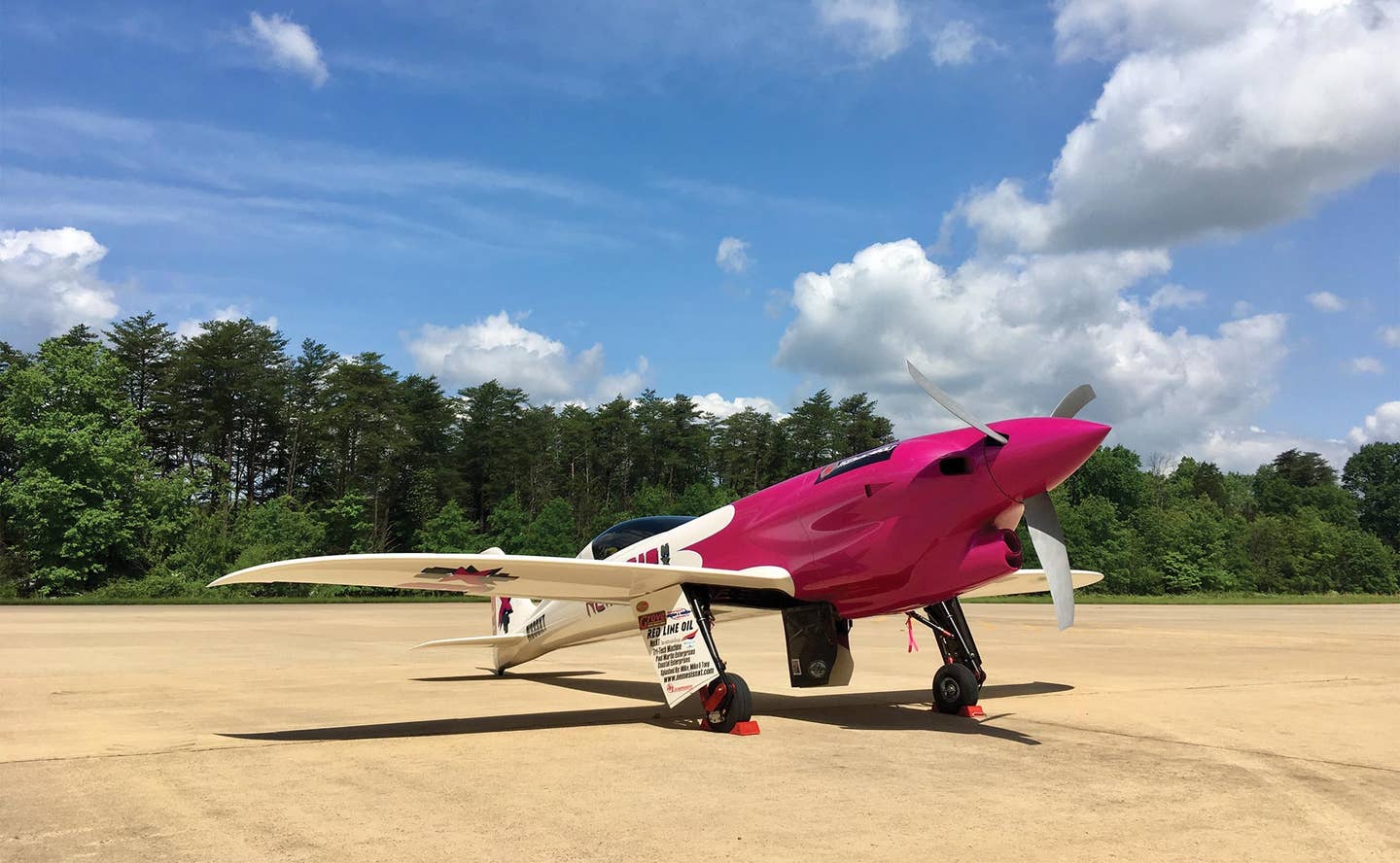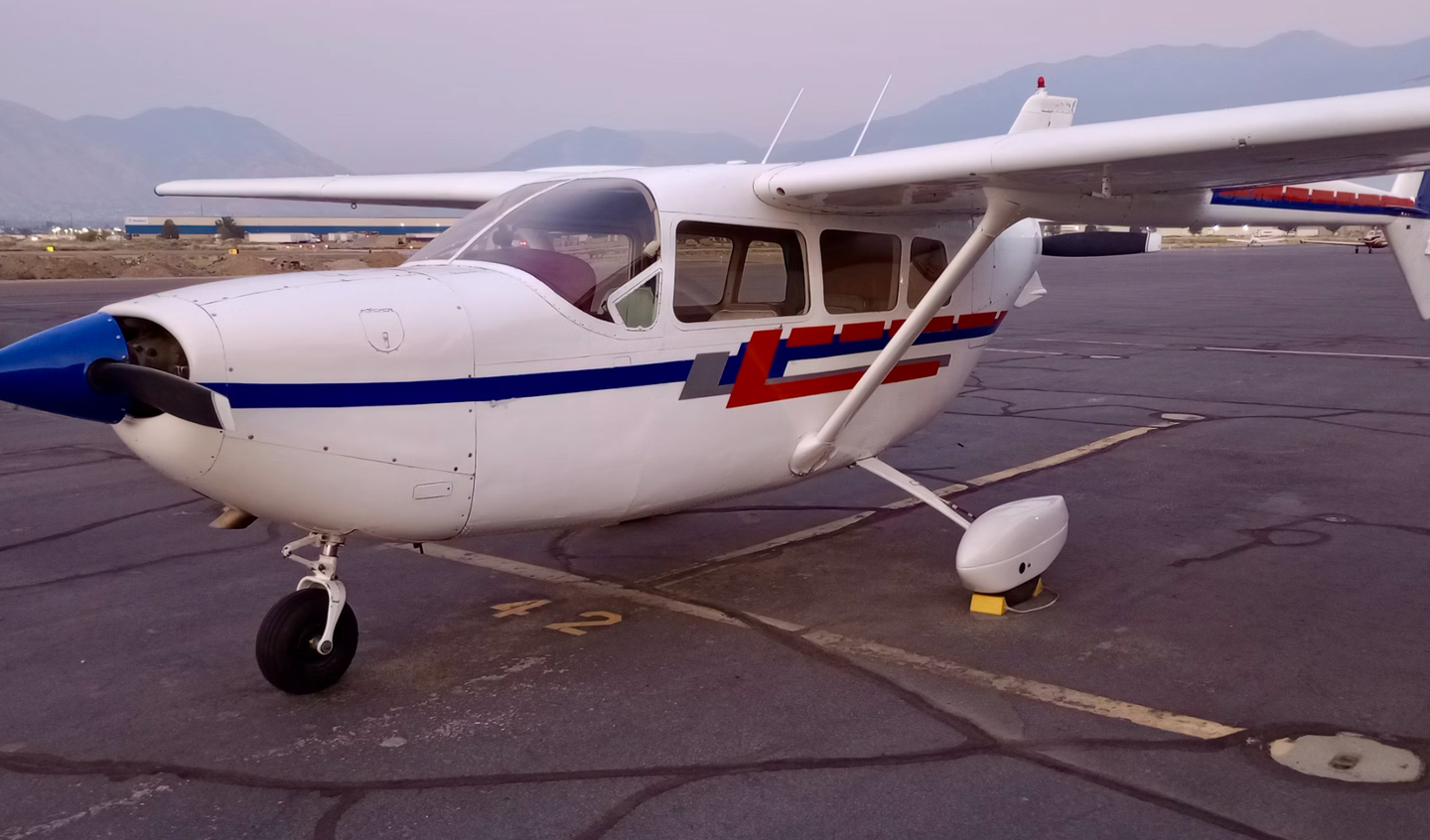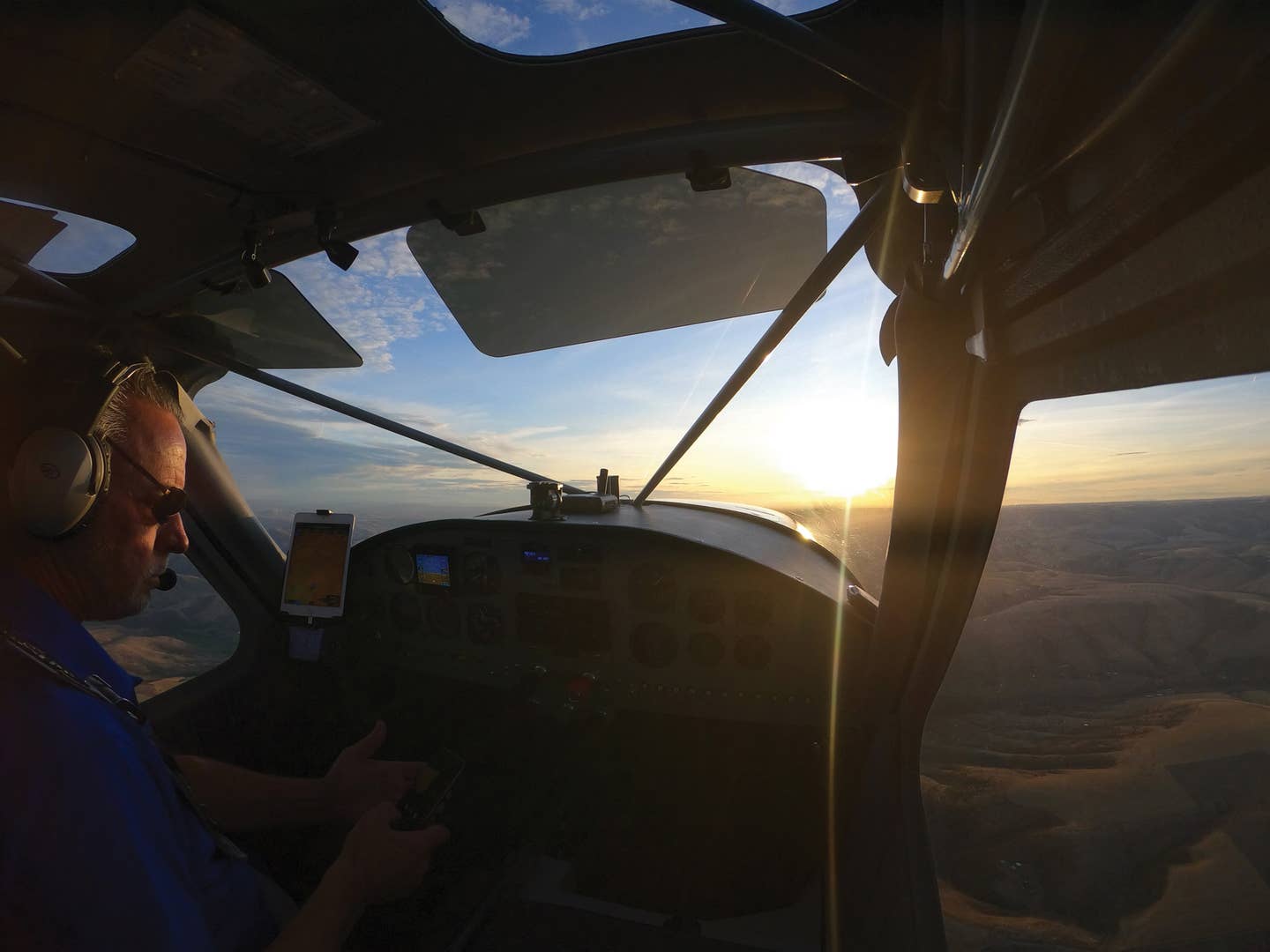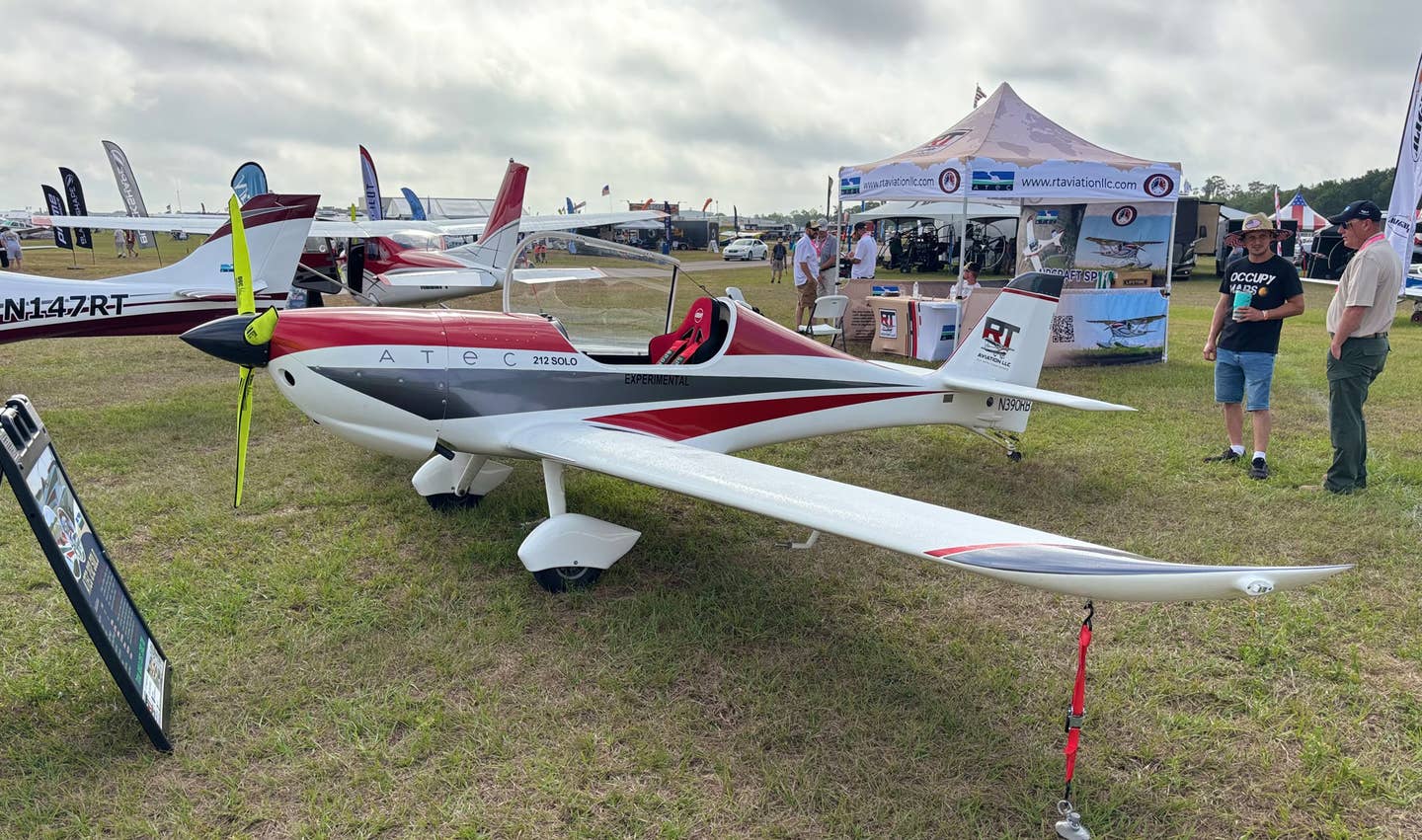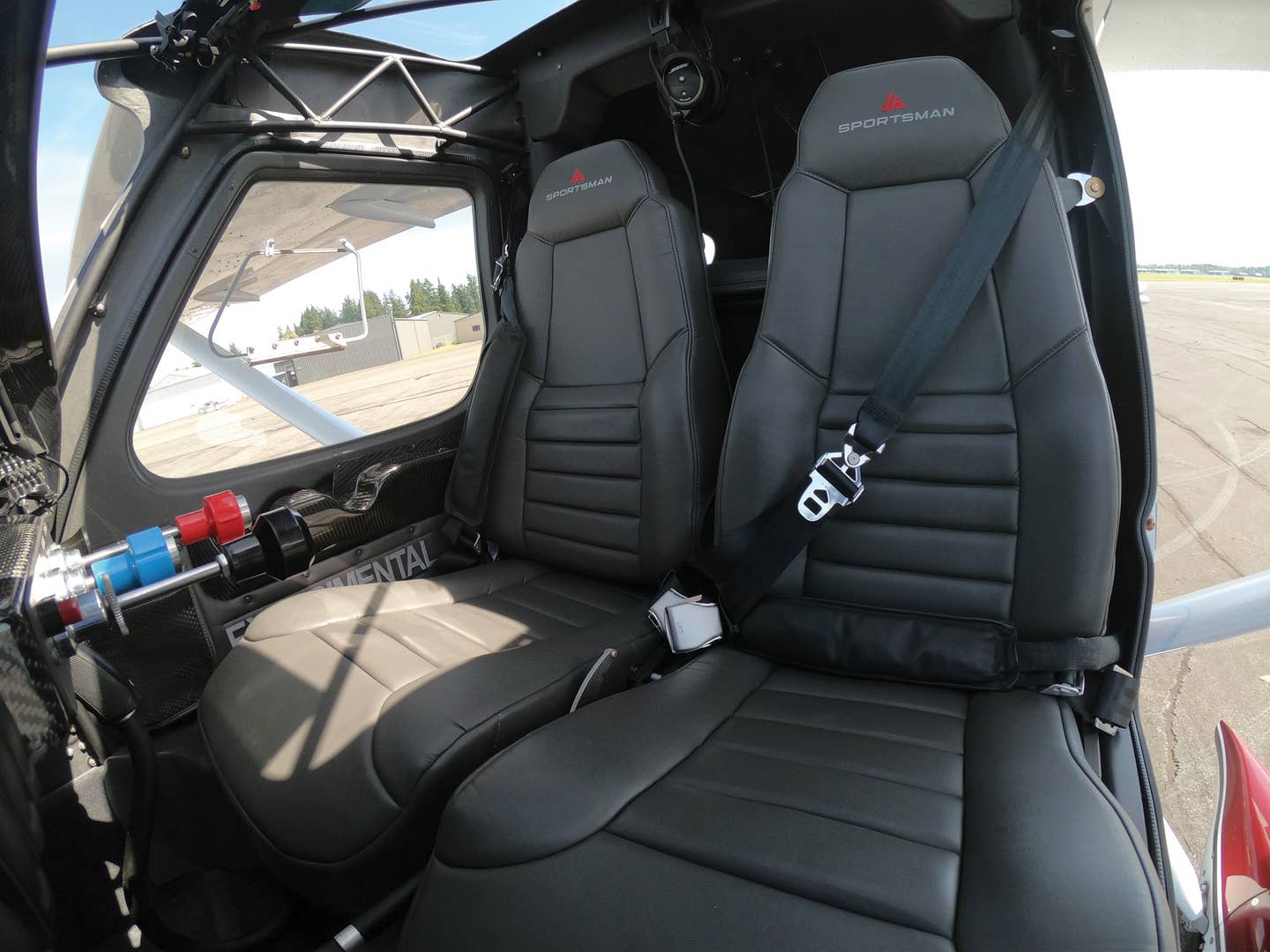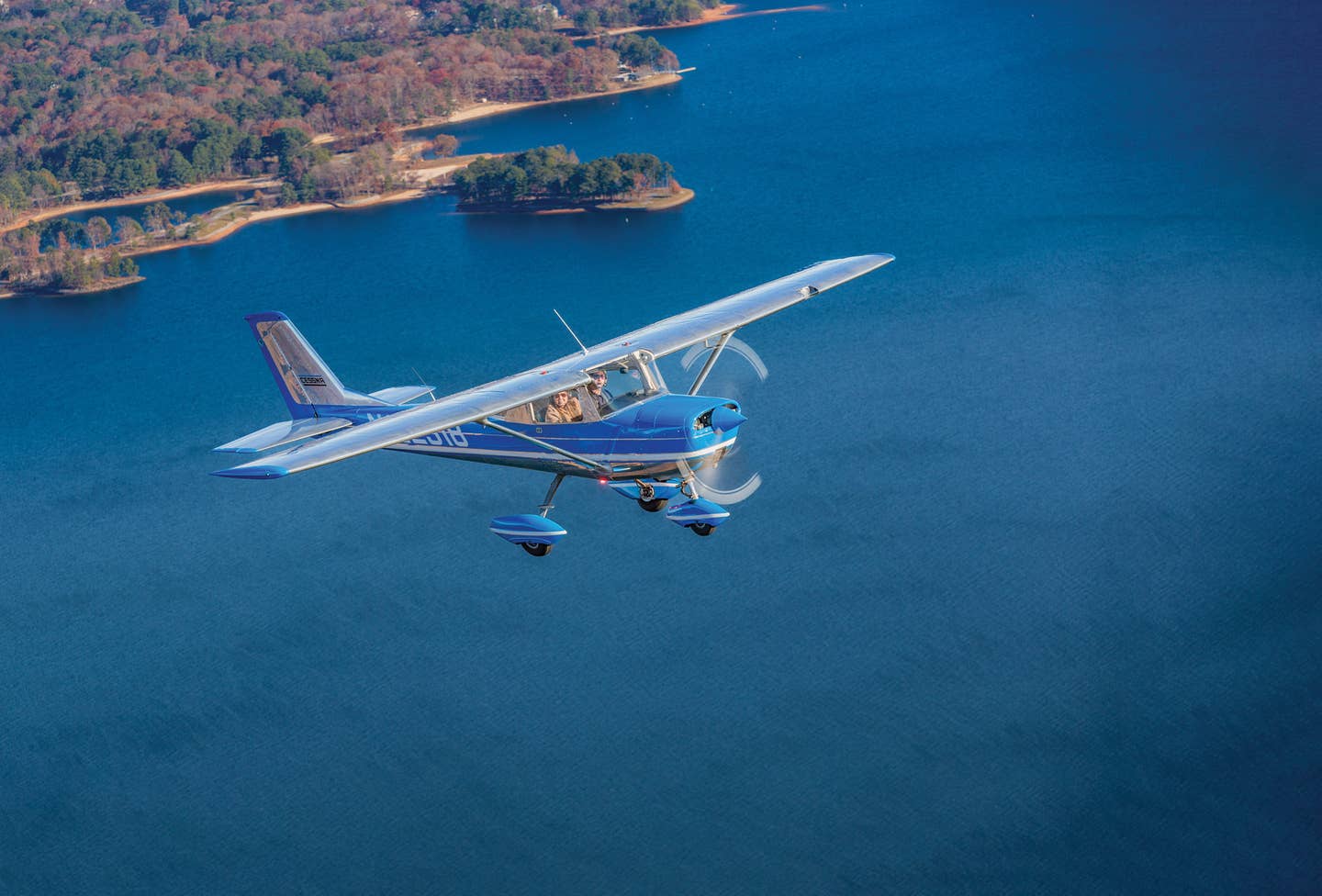
Images by Leigh Hubner
A Cessna 150. It’s almost a tale as old as time.
Whether you’re an accomplished pilot with thousands of hours or just starting out, chances are you’ve spent time in a 150. For me, the 150 gave me my first and (so far) only scare with carb ice. Hopefully, your C-150 story is far more enjoyable than that.
But back to business. If you haven’t heard of the story surrounding N22318, a polished cruiser with blue trim and a larger social media following than some of your favorite jokesters, DIYers, and whoever else is out on the worldwide web these days, you’ll soon understand just how this little trainer has made the Cessna 150 cool again.
It’s a solid bet that almost nobody trained in a Cessna 150 this clean.
A Little History
But before we learn more about Drew Reggie and Lanie Bakeberg’s Cessna 150, let’s take a step back in time to 1958. It was this year that the Cessna 150 made its public debut. For a mere $6,995, for a standard model, a pilot could find themselves in the left seat as an aircraft owner. A standard 150, equipped with a Land-O-Matic gear, 40-degree Para-Lift flaps, two seats, a straight tail, and powered by a 100 hp Continental O-200 engine fit the bill for many, especially those who did not want to deal with the 150’s trickier tailwheel predecessors, the Cessna 120 and 140.
This 150, owned by Reggie and Bakeberg (both in their mid-30s), is based out of Lawrenceville, Georgia, northeast of Atlanta. Reggie is the pilot in command and Bakeberg is the significant other turned right-seater, weatherwoman, trip planner, idea bouncer, and content gatherer, have owned N22318 since 2020.
“It was a COVID purchase,” said Reggie. “I started going down the rabbit hole on Barnstormers and Trade-A-Plane. I said, ‘Let’s just do it now and start with something that’s gonna get us 90 percent of the fun for 10 percent of the cost.’”
“But your original idea wasn’t a 150,” Bakeburg reminded Reggie.
“It wasn’t,” he said. “I went back and forth with a lot of different stuff. A Piper Archer, Tri-Pacer, a Cessna 172 or 182 would have worked, but I wanted to buy an airplane and fly it a ton, and not be worried about the expenses that come with bigger and faster airplanes. Ultimately, if 90 percent of the trips are just going to be the two of us, I can rent if I need four seats for one or two trips a year.”
Bakeberg and Reggie have owned their 150 since 2020. Cessna thought so highly of the two-seater that it felt compelled to spell out the model name for all to see.
His final logic is inescapable: “Buy for the 90 percent, not the 10 percent.”
After deciding that they wanted to spend $38,000 for a 150 or 152 with at least 1,000 hours left on the engine and some IFR equipment, they put an ad on Facebook. Reggie received a message a week later describing the perfect platform for $4,000 under budget. With airplanes selling like hotcakes during the pandemic, there was no time to spare. Reggie agreed to purchase the 150 sight unseen. “I got home from work and asked him what color it was, and he said, ‘I don’t know,”’ recalled Bakeburg.
But what Bakeburg did know was that she wasn’t sold on the idea.
“Maybe we should buy a house first?” she said. “But I wanted to be supportive, so I decided to make it an Instagram. Kind of like what everyone does when they get a dog. Even though in the back of my mind I was thinking, this is such a bad idea.”
Everything changed when she first climbed in. “Yeah, we’re doing this,” said Bakeburg.
The partially polished scheme of N22318 is eye-catching, giving this 150 presence above its place in the aero pecking order.
‘Fly Me to the Fun’
If you picked up Plane & Pilot because the airplane on the cover looked vaguely familiar, you’re probably onto something. Whether you’ve seen this blue beauty in person at an event like EAA AirVenture or online (the couple’s Instagram, TikTok, and YouTube accounts boast over half a million followers combined), this 150 is making an impact all over the country and beyond.
Young and young-at-heart pilots approach Reggie and Bakeburg everywhere they go to get an up-close-and-personal look at 22318.
“Everyone has an experience with a 150,” said Bakeberg. “Every single person that comes up to us tells us they flew a 150, or [say] I used to own a 150, and I never should have sold it. We’ve considered selling it at points, but every person tells you it’s a bad idea.”
In addition to getting an up-close-look on the ground, pilots shout out the internet famous pair every chance they get. I witnessed it firsthand as Reggie announced their departure from the Gainesville, Georgia, airport (KGVL) just prior to our photo mission for this story. “Y’all are awesome, keep up the great work,” a pilot in the pattern announced over frequency.
Reggie and Bakeburg’s online presence—@flymetothefun—started as a fun way of Bakeburg telling Reggie to… you guessed it… fly her to the fun. Although it started out as just an Instagram handle, it has resulted in full-time content creator jobs for the couple who now fly their Cessna 150 in the same way as many people would fly their Bonanza or Cirrus—airplanes with starting prices at least three times the cost of the 150.
Bakeberg and Reggie document most of their trips.
Although using a Cessna 150 to travel the country is not a new idea, that’s actually what they were advertised to do. “Deluxe commuter or economical trainer,” states a Cessna advertisement from 1970—the latter half of that tagline has long overshadowed the personal transportation aspects that Cessna was shooting for. This young couple isn’t reinventing the wheel with their trainer. They are shining a light on Cessna’s original intentions for the action-packed adventure machine.
Averaging 200 hours a year, the 150 crisscrosses the country in search of sandy beaches, good food, time with family and friends, and, of course, fly-ins and other aviation-related events. In addition to adventuring around the United States, Reggie and Bakeburg have done what many other Cessna 150 pilots (including myself) might call self-induced torture—flying it all the way from Georgia to the Bahamas.
“[That] was our first time over water,” said Reggie. “We put our life jackets on, we had a ditching plan, and worse case we had our [emergency position indicating radio beacon]. We felt comfortable enough. We trusted the airplane. So we did the Bahamas, came back and thought that it wasn’t that sketchy at all. It was awesome.”
Seeking out more of a challenge, the couple embarked on their dream trip, which was also their longest trip—Lawrenceville, Georgia (KLZU) to St. Barts (TFFJ). A 3,284 nm round trip encompassing 42.7 hours of flying and $2,134.85 of 100LL.
Respectfully modernized, this 150 keeps its Royalite-panel charm.
“I’ve been aware of St. Barts forever, since I was playing flight sim as a kid,” said Reggie. “It was a beautiful looking place with a super unique airport, so that’s always been a goal of mine…There’s literally $300 million boats, with a $12 million helicopter sitting on the front, and we rolled in in a 150.”
Although a $34,000 Cessna 150 doesn’t exactly blend in with helicopters, jets, and brand-new Cirruses parked on the ramp in faraway tropical lands, none of that matters once you step off the flight line.
At a bar in St. Barts, Reggie and Bakeburg relived their once-in-a-lifetime flight into paradise. “A guy who flew a Citation X into St. Maarten was listening in on our conversation,” said Reggie. “[They asked] how did you get your jet into St. Barts? Nobody does that.”
For context, the only runway on the island is just 2,119 feet long with a downward slope that extends right into the ocean. Landing at St. Barts also requires unique training and a sign-off from an instructor. “Well, we came in a 150,” Reggie replied. “Wait, what’s that?” asked the jet pilot. After several laughs, that captain learned a thing or two about the adventurous spirit of a young couple and the reliability of a 100 hp two-seat trainer from 1968.
Still faster than a car, the mighty 150 glides over Atlanta traffic in the sunshine.
The Realities
Although the 150 might be able to get into places that even jets can’t go for prices that won’t require taking out a second mortgage, the 150 isn’t for everyone. “I’m 5-foot-8. We’re not big people,” said Reggie.
If you’ve been following the couple’s social media channels, you might have seen them weighing everything they plan to take with them (including themselves) on a bathroom scale in their T-hangar. “The 150 has a cargo capacity of 120 pounds behind the seats, but, of course, it becomes a trade-off with takeoff weight, fuel, etc,” said Reggie. “Just know what a 150 comes with. You’re going to be going slow, you’re not going to have an autopilot, and you’re going to have to call off trips or legs that are important to you.”
But Reggie has a clever way of looking at their 100 mph cross-country speeds. “I like to look at it as a car instead of a plane or a jet. For us, we cut drive time, on average, in half. For us, that’s good. You save time, so you’re still in the spirit of GA but at a cost not even close to a million dollar SR22 that’s going to get you there slightly faster, but you’re going to be paying $100,000 a year just to have that thing.”
At the end of the day, the 150 is still an airplane, and as we all know, airplanes sometimes have a mind of their own. “We’ve had multiple annuals at $900 or $1,100, but we’ve also had an annual that was $5,000 because we had to replace a cylinder,” said Reggie. “But with a 150 you’re much more likely to not have unexpected expenses in the many thousands of dollars. It is possible, but it’s not as common. You could have a brand-new SR22, walk right out to it, and have an $8,000 or $10,000 pop-up situation.”
A Direct Comparison
Although Reggie and Bakeburg have a soft spot in their hearts for their Cessna, Reggie recently dipped his toes into the Beechcraft world, after managing the restoration and selling a 1984 A36 Bonanza. “I loved what they did to the Bonanza. It was beautiful,” said Bakeberg. “And we could actually bring our friends on adventures, but I’m just so comfortable in the 150. I also never loved the visibility in the Bonanza. A combination of a high glareshield, low wings, and flying at higher altitudes made it harder to see out of than the 150. I love flying low and slow.”
Although low and slow isn’t for everyone, when pen is put to paper, the cost associated with a Bonanza is simply out of reach for many pilots, especially those just starting out. “Of course, these numbers vary, but the 150’s insurance is about $900 a year,” said Reggie. “An A36’s is around $5,500. In today’s market you can go out and buy a really nice 150 for $65,000. The price of a Bonanza varies widely, but plan on $250,000 to $550,000. Then you have the gas. The 150 only burns 6 gph, [and] an A36 burns 16 gph.” Not to mention the wildly more expensive maintenance costs associated with a Bonanza as compared to a 150.
“A Bonanza might get you some- where an hour or hour and a half faster than if you were to go low and slow, but you’re going to be paying so much more every year just to have it,” said Reggie. Although cars have almost no chance of passing a Bonanza on a cross-country trip, and that is most definitely a reality of flying a Cessna 150, the couple is set on never selling their beloved airplane. “We have thought about selling it. I’m ready for something faster—at least I tell myself that,” said Reggie. “We’ve got pretty good equity in it, and it would be nice to get that out, but the 150 has to stay part of the family forever.”
If you’re feeling inspired by the story of 22318 and thinking of purchasing a 150 to begin your reasonably affordable cross-country adventures in, Reggie said there are a few things to look for. “They do have real limitations in terms of weight and balance. We got really lucky that ours has a really high useful load. It’s 562 pounds, which is like at the top, that I’ve heard of at least. We also have long-range tanks, which made the St. Barts trip possible. Without that we couldn’t have done the trip.”
Bakeburg added: “We have 35 usable, versus 22 [in the standard configuration].”
The tiny but mighty Cessna 150 has withstood the test of time. It unites pilots of all ages, backgrounds, and experience levels, thanks to the airplane’s reliability, longevity, and affordability. “It’s like a starter house,” said Bakeberg.
“I had always pictured airplane ownership in its final state, with whatever that dream plane is,” said Reggie. “But just to get started and realize how many adventures and life-changing experiences you can have in an airplane that you don’t necessarily think is the dream plane can really make you rethink what that dream plane is. The 150 has changed absolutely everything for us in ways we never could have imagined.”
Images by Leigh Hubner
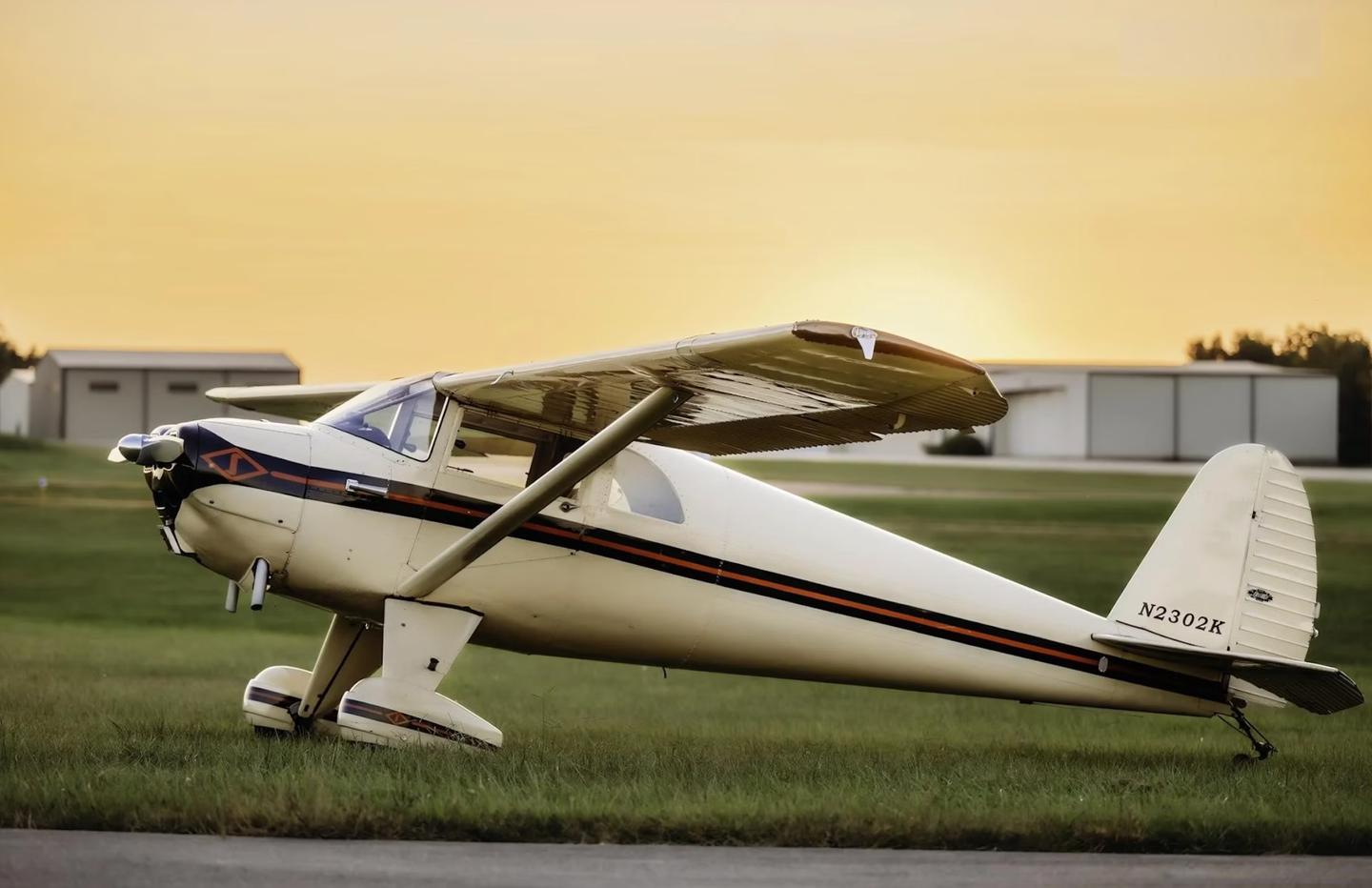
Subscribe to Our Newsletter
Get the latest Plane & Pilot Magazine stories delivered directly to your inbox

